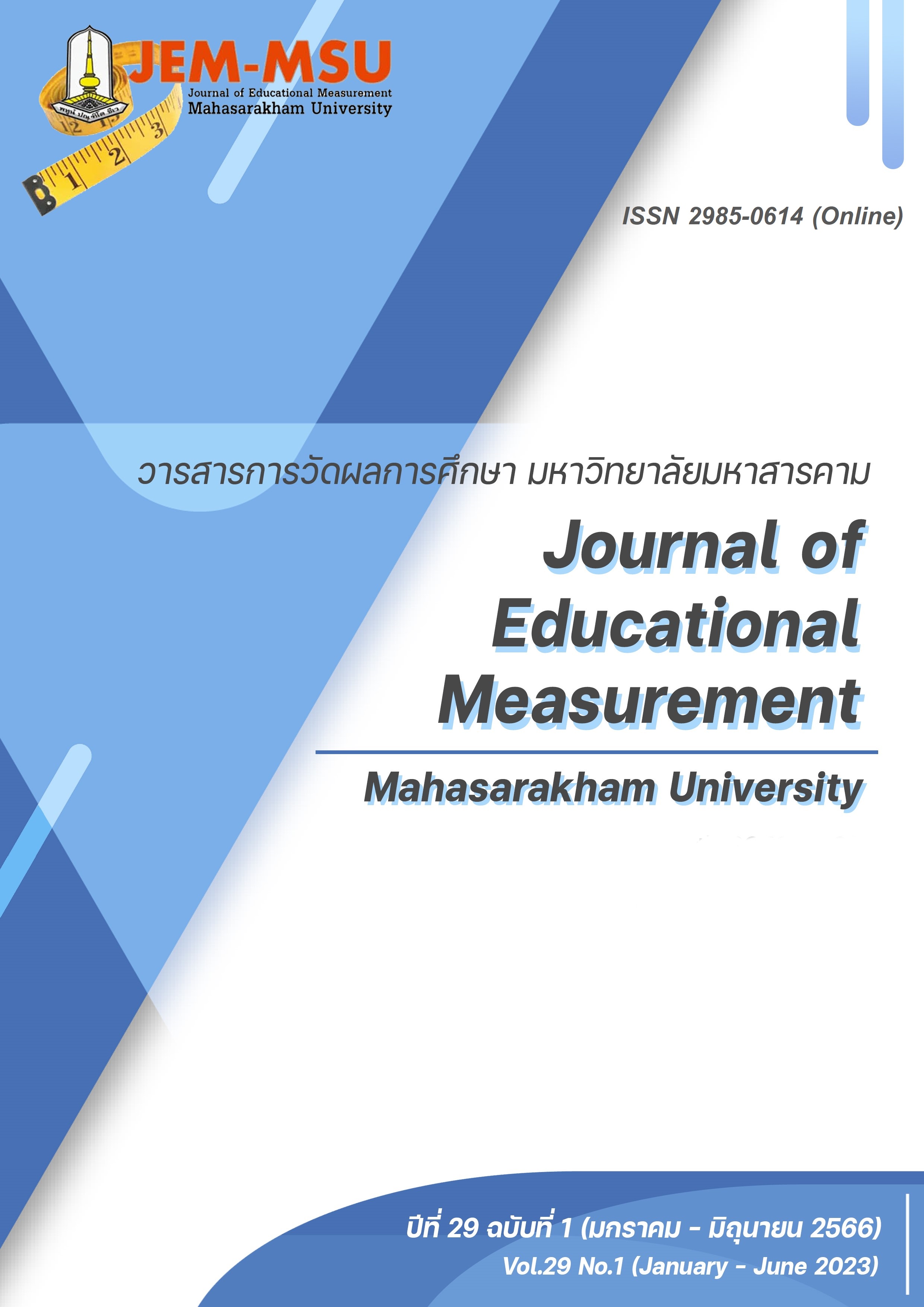Enhancing Complex Problem-Solving Skills of Adolescents by Applying Information Processing Theory and Self-Regulation Learning
Main Article Content
Abstract
This research aimed to develop and investigate the effects of a computer program for enhancing complex problem-solving skills of adolescents by applying information processing theory and self-regulation learning. The sample consisted of 60 adolescents 13 – 17 years of age. Thirty adolescents were randomly assigned into the experimental group and the other 30 into the control group. Data of complex problem-solving skills were collected, using COMPRO. The analysis of data employed pair–sample t-test, ANOVA, MANOVA and MANCOVA. The research results revealed that: 1) the computer program developed consisted of 3 phases: Phase 1 dealt with planning, setting goals and strategies. Phase 2 dealt with examining efficiency, assessing strategies and improve strategies. Phase 3 dealt with application of knowledge. The computer program was suitable for enhancing complex problem-solving skills in adolescence (S-CVI=.90); and 2) the complex problem-solving scores of the experimental group, after training, were higher than those of the control group, with statistical significance at the .05 level (FWilk’Lamda=6.26, p=.00).
Article Details

This work is licensed under a Creative Commons Attribution-NonCommercial-NoDerivatives 4.0 International License.
The content and information contained in the published article in the Journal of Educational Measurement Mahasarakham University represent the opinions and responsibilities of the authors directly. The editorial board of the journal is not necessarily in agreement with or responsible for any of the content.
The articles, data, content, images, etc. that have been published in the Journal of Educational Measurement Mahasarakham University are copyrighted by the journal. If any individual or organization wishes to reproduce or perform any actions involving the entirety or any part of the content, they must obtain written permission from the Journal of Educational Measurement Mahasarakham University.
References
Dörner, D., & Funke, J. (2017). Complex problem solving: what it is and what it is not. Frontiers in psychology, 8, 1153.
ElAdl, A. M., & Polpol, Y. S. (2020). The Effect of Self-Regulated Learning Strategies on Developing Creative Problem Solving and Academic Self-Efficacy among Intellectually Superior High School Students. International Journal of Psycho-Educational Sciences, 9(1), 97-106.
Fischer, A., Greiff, S., & Funke, J. (2012). The process of solving complex problems. Journal of Problem Solving, 4(1), 19 – 42.
Frensch, P. A., & Funke, J. (Eds.). (1995). Complex Problem Solving: The European Perspective. Erlbaum.
Griffin, P., & Care, E. (Eds.). (2014). Assessment and teaching of 21st century skills: Methods and approach. Springer.
Greiff, S., & Wüstenberg, S. (2015). Komplexer Problemlösetest COMPRO [Complex problem-solving test COMPRO]. Schuhfried.
Hair, J. F., Black, W. C., Babin, B. J., & Anderson, R. E. (2010). Multivariate data analysis. (7th Ed.). Pearson.
Jana, S., Dey, A., Maji, A. K., & Pal, R. K. (2022). Solving Sudoku Using Neighbourhood-Based Mutation Approach of Genetic Algorithm. In Advanced Computing and Systems for Security. 13, 153-167.
Klausmeier, H. J. (1985). Educational psychology. Harpercollins College Division.
Kretzschmar, A., & Süß, H. M. (2015). A study on the training of complex problem solving competence. Journal of Dynamic Decision Making, 1, 4-4.
Krieger, F., Stadler, M., Bühner, M., Fischer, F., & Greiff, S. (2021). Assessing complex problem-solving skills in under 20 minutes. Psychological Test Adaptation and Development. http://dx.doi.org/10.1027/2698-1866/a000009.
Mainzer, K. (2009). Challenges of Complexity in the 21st Century. Advanced Science Letters, 1(1), 145-150.
Pelánek, R. (2011). Human problem solving: Sudoku case study. Technical Report FIMURS-2011-01, Masaryk University Brno.
Raven, J. (2008). The Raven progressive matrices tests: their theoretical basis and measurement model. Uses and abuses of Intelligence. Studies advancing Spearman and Raven’s quest for non-arbitrary metrics, 17-68.
Schoppek, W., & Fischer, A. (2017). Common process demands of two complex dynamic control tasks: transfer is mediated by comprehensive strategies. Frontiers in psychology, 8, 2145.
Süß, H. M., & Kretzschmar, A. (2018). Impact of cognitive abilities and prior knowledge on complex problem solving performance–empirical results and a plea for ecologically valid microworlds. Frontiers in psychology, 9, 626.
World Economic Forum. (2016). Global Risks 2016: Insight Report (11th Ed.). World Economic Forum.
World Economic Forum. (2018). The Future of Jobs Report 2018. World Economic Forum.
Zimmerman, B. J. (2002). Becoming a self-regulated learner: An overview. Theory into Practice, 41(2), 64-70.


